**The desert and the arctic have a lot in common:**
Both are extreme environments that appear hostile to life at first, but are full of hidden surprises,
Both have beautiful, other-worldly landscapes, remote and empty,
Both are fragile environments sensitive to climate change,
And, both have hypolithic cyanobacteria!
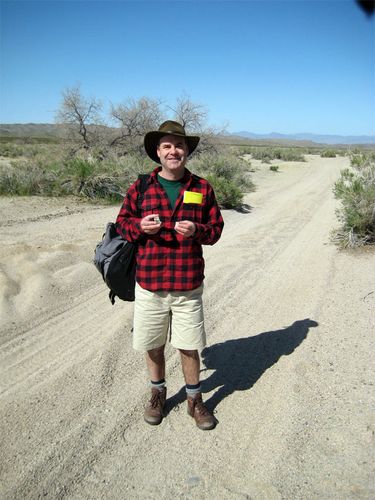 It looks inhospitable to life until you put your nose close to the ground
It looks inhospitable to life until you put your nose close to the ground
I am here in Zzyzx California, inside the Mojave National Preserve, with over fifty other scientists, students and teachers to participate in a program called Spaceward Bound. Funded by NASA and lead by NASA scientist Chris McKay, it is best described as astrobiology field camp.
Astrobiology means studying life in extreme environments in order to understand how to find life on other planets like Mars.
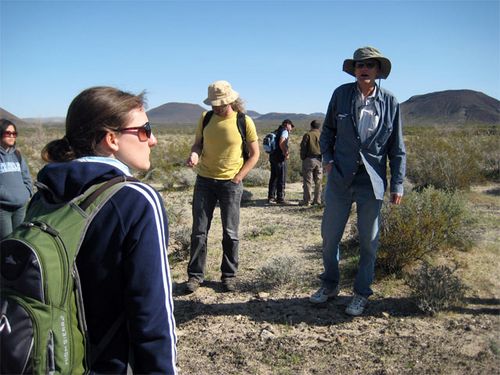 Our leader, Chris McKay, is the tall guy in the hat. What look like black pebbles at his feet are really cryptogamic crust (cyanobacteria.)
Our leader, Chris McKay, is the tall guy in the hat. What look like black pebbles at his feet are really cryptogamic crust (cyanobacteria.)
Today we saw lots of cyanobacteria in the field. Cyanobacteria are some of Earth’s oldest, simplest and toughest microorganisms. They live in lots of places, not just the desert.
Here, we found them under rocks (hypolithic), hidden inside rocks (cryptoendolithic) and on the surface of the soil, protected by black "sunscreen” pigments (cryptogamic crusts.) Hypolithic cyanobacteria are best known from the Arctic (Devon and Cornwallis Islands) and the Antarctic Dry Valleys.
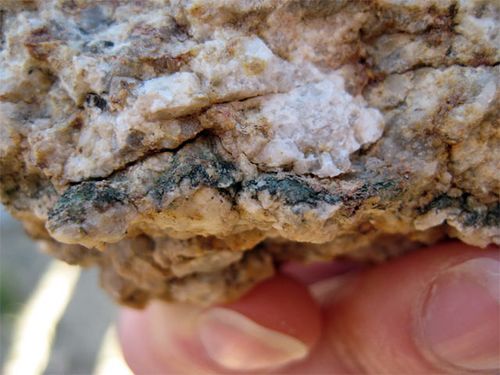 The green band is the cyanobacteria. We had to break the rock open to see them.
The green band is the cyanobacteria. We had to break the rock open to see them.
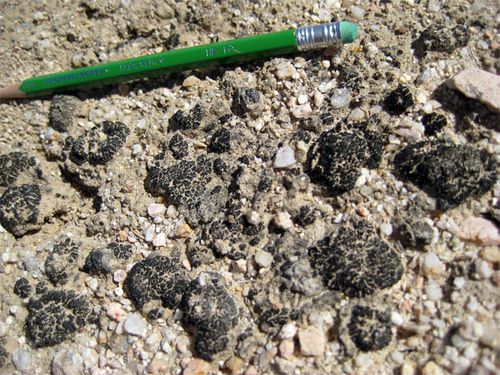 The black nodules are made of cyanaobacteria. They are loaded with chlorophyll, but black pigments which serve as sunscreen hide the green color.
The black nodules are made of cyanaobacteria. They are loaded with chlorophyll, but black pigments which serve as sunscreen hide the green color.
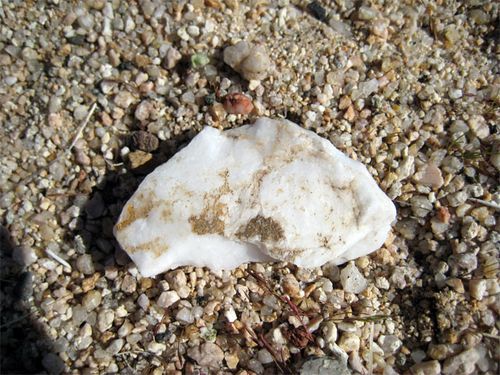 You would never think to turn it over
You would never think to turn it over
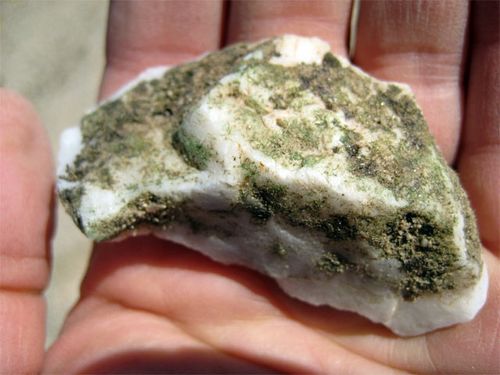 The sunlight passes right through the rock like it would through a greenhouse window. The rock protects the cyanobacteria from drying out.
The sunlight passes right through the rock like it would through a greenhouse window. The rock protects the cyanobacteria from drying out.
Tomorrow I’ll learn how a spectrometer can be used to detect chlorophyll in the field.

